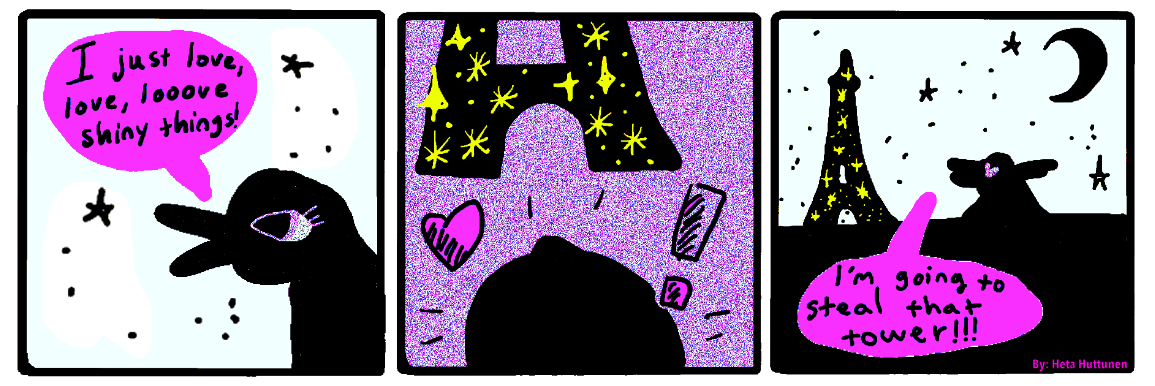STEP 1: BRAINSTORMING A COMIC CHARACTER
Try to come up with five (5) features that could describe your character. You can use these five questions written down below
to make this one easier for you.
THE SUPPORTING QUESTIONS:
1. What is your favorite creature?
2. What is your favorite color?
3. What is your favorite place?
4. What superpower you would like to have?
5. Name one annoying trait that you have?
Here are some example answers:
THE SUPPORTING QUESTIONS:
1. What is your favorite creature?
– Some kind of bird, maybe a RAVEN!
2. What is your favorite color?
– Black and PINK! Obviously!
3. What is your favorite place?
– I love Paris.
4. What superpower you would like to have?
-Invisibility would be cool…
5. Name one annoying trait that you have?
-Maybe greed haha!
With the help of the five supporting questions, you can gather some information about your comic character!
For Example, my character based on my previous answers could be:
– A Raven
– The coloring of the raven and the comic could be mostly black and pink, because I like those colors.
-The Raven lives in Paris.
-And has a super power of being invisible.
-Unfortunately, the Raven is not perfect, as nobody is, and she is greedy.
With these information above, one can start sketching a character, which can then be modified if needed.
STEP 2: A MOOD GALLERY
If the character is completed, one can sketch it’s various expressions and gestures. What the character looks like when it is:
A) Happy
B) Sad
C) Tired
D) Angry
E) Laughing
F) Thinking
G) In love
H) Surprised
Did you come up with any other moods and expressions?
STEP 3: A SHORT COMIC OF YOUR CHARACTER
After brainstorming and sketching your character, you are ready to try draw your short comic with the character in it.
Try drawing 3 to 4 frames.
You can draw the frames freely or with the help of a ruler if you own one.
When drawing a character it’s a good idea to show them from as many angles and point of views as possible.
When you’re creating the short story of 3 to 4 frames, try to use the answers of the supporting questions as much as possible:



